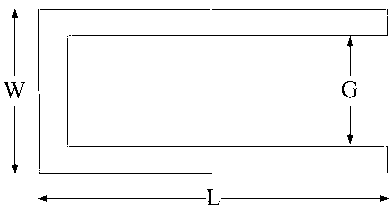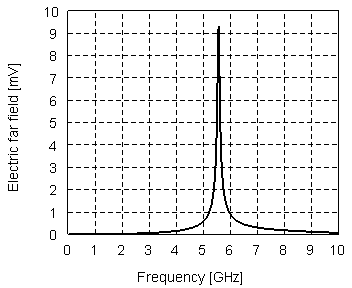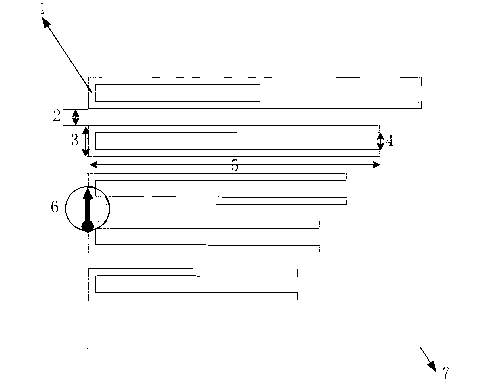Chipless radio frequency identification (RFID) electronic tag based on pole identification
A technology of electronic tags and poles, which is applied to recording carriers used by machines, instruments, computer components, etc., can solve the problems of high requirements for the combination of chips and transceiver antennas, difficulties in packaging and manufacturing, and poor environmental adaptability, so as to ensure insensitivity , Low single chip price, low energy consumption
- Summary
- Abstract
- Description
- Claims
- Application Information
AI Technical Summary
Problems solved by technology
Method used
Image
Examples
Embodiment Construction
[0017] exist image 3 , the excitation wave source (6) applies ultra-wideband (UWB) impulse pulse electromagnetic waves, the incident direction is perpendicular to the paper surface within ±60 range, the polarization direction is parallel to the short axis of the label, and the working frequency can be selected according to actual needs. according to Figure 5 The shown pole extraction procedure obtains pole distributions corresponding to different label structures. In the electromagnetic field simulation software FEKO, the method of moments (MOM: Method of Moments) is used to obtain the complex frequency domain data of the tag relative to the UWB incident wave scattering electric field, and the inverse fast Fourier transform (IFFT) is completed on the data to obtain the time domain impulse. Response, and then use the matrix beam method (MPM: Matrix Pencil Method) to extract the corresponding poles and residues, and then achieve the purpose of label recognition.
[0018] F...
PUM
 Login to View More
Login to View More Abstract
Description
Claims
Application Information
 Login to View More
Login to View More - R&D
- Intellectual Property
- Life Sciences
- Materials
- Tech Scout
- Unparalleled Data Quality
- Higher Quality Content
- 60% Fewer Hallucinations
Browse by: Latest US Patents, China's latest patents, Technical Efficacy Thesaurus, Application Domain, Technology Topic, Popular Technical Reports.
© 2025 PatSnap. All rights reserved.Legal|Privacy policy|Modern Slavery Act Transparency Statement|Sitemap|About US| Contact US: help@patsnap.com



